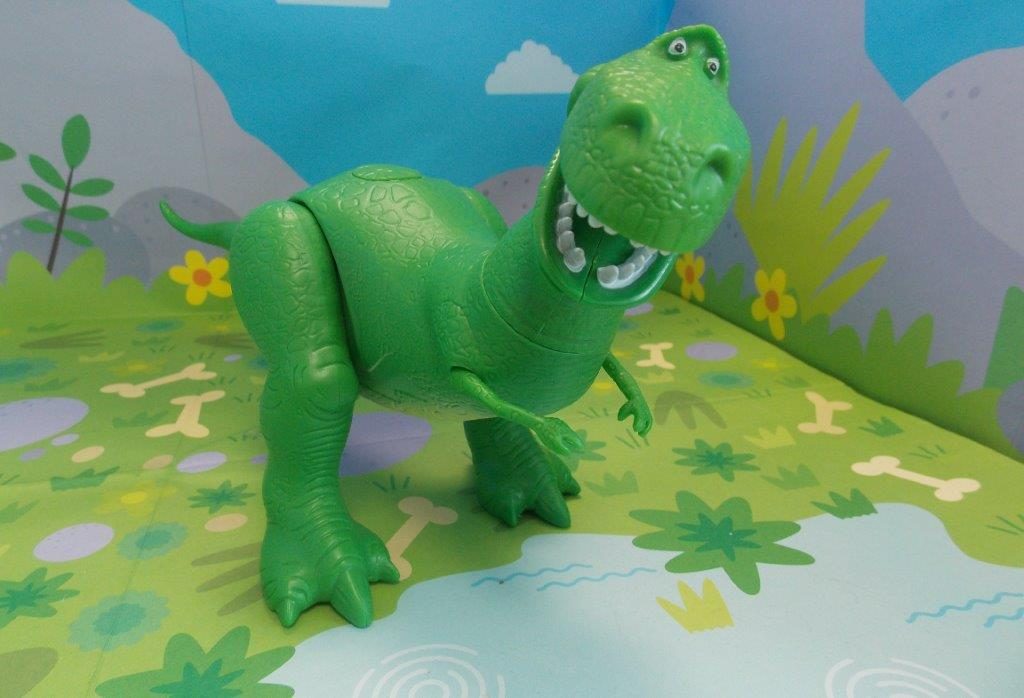Tyrannosaurus rex is one of the most iconic dinosaurs and features in most toy collections as children go through the ‘dinosaur phase’. My dinosaur phase has lasted a bit longer than most, so much so that my collection spans several decades of plastic and rubber dinosaurs – starting from the 1970s when I was barely ankle height to a T. rex.
We’ve never seen a live Tyrannosaurus rex so all reconstructions of it are based on a mixture of examining the fossil evidence, intelligent guesswork from studying living animals, and a bit of imagination. Perceptions of dinosaurs have changed over time as a result of new fossil discoveries and the continued study of museum collections.
So, how has T. rex the toy evolved over time?
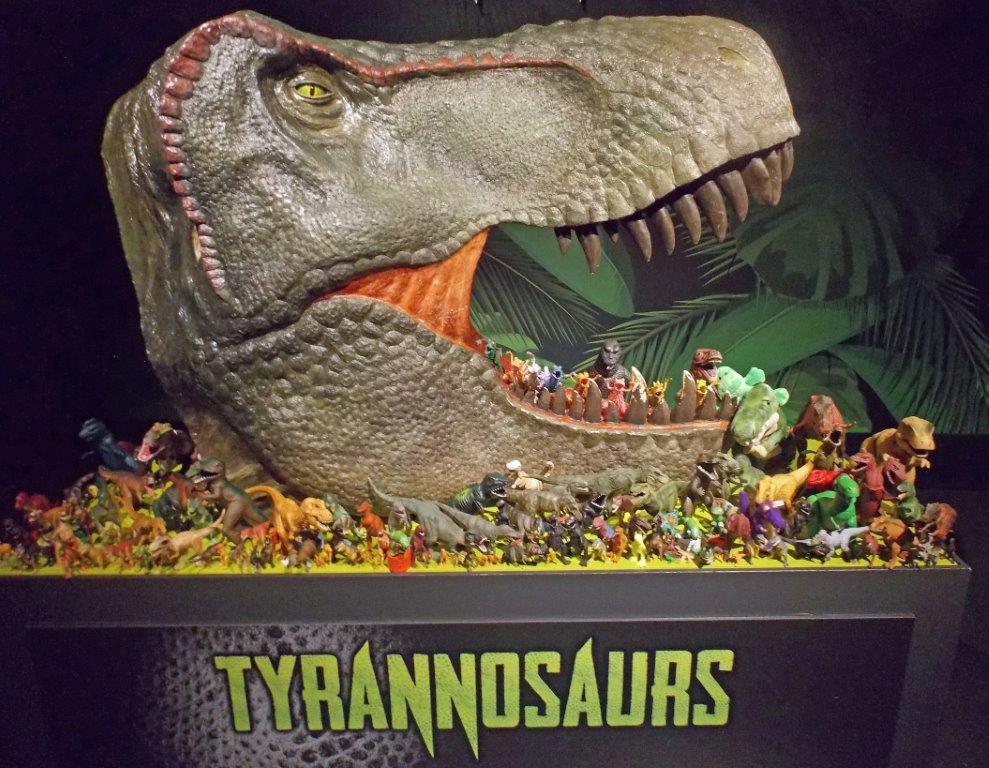
For the best part of the 20th Century, dinosaurs were considered to be slow, stupid swamp dwellers — and in the case of T. rex — always looking for its next meal. Images of dinosaurs as doomed failures bound for extinction entered popular culture (though some Victorian images did show dinosaurs as active animals).
Toy and model dinosaurs therefore tended to reflect this perception. Older T. rex toys usually have an upright sloping posture; this was how most bipedal (two legged) dinosaurs were originally reconstructed. It was assumed that they had to balance on their tail which they would drag along the ground behind them. Museum mounts using real fossils or plaster replicas are also very heavy, so mounting them in more active poses on heavy metal frames is also difficult.
However, evidence from fossils found in the 1960s — like that of Deinonychus (a larger relative of Velociraptor) — showed that many bipedal dinosaurs probably walked with their spine held in a more horizontal posture with the tail held up off the ground. This led to new insights about dinosaurs as more active animals, but it took a long time for this to be reflected in most dinosaur toys.
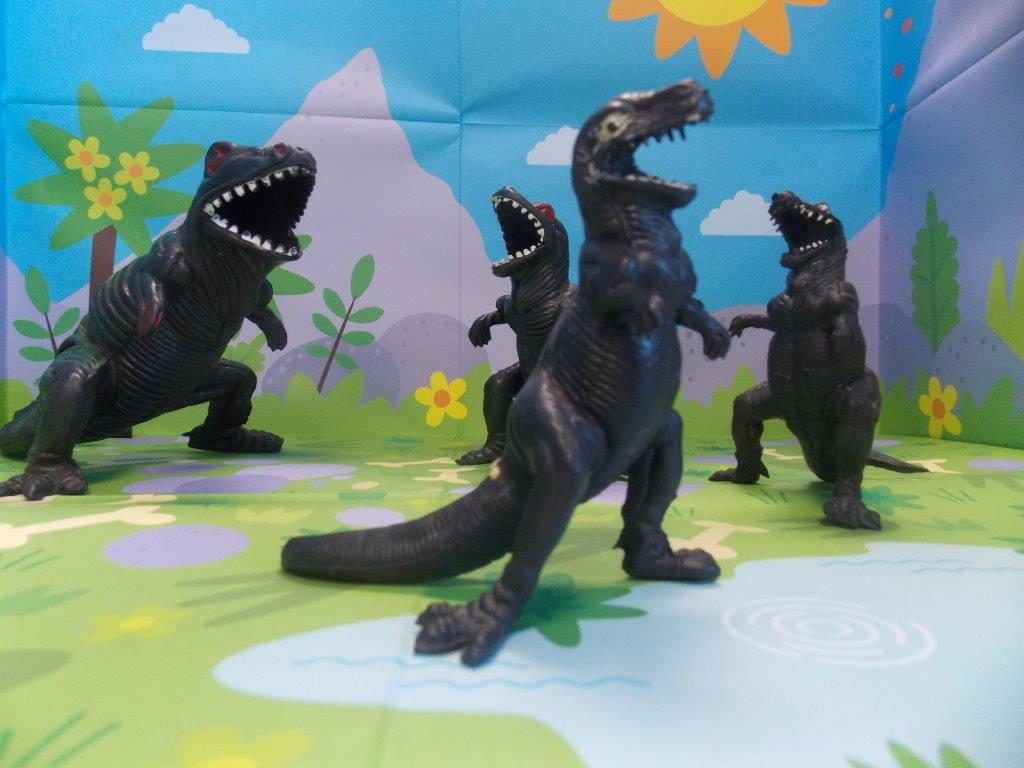
The choice of dinosaur toy available in the UK used to be somewhat limited: Triceratops, Stegosaurus, Brontosaurus and Tyrannosaurus were the most common toys – along with some non-dinosaurs like the sail-backed Dimetrodon.
The first toy dinosaurs I had included Imperial models from the 1970s which have an upright stance, splayed out legs and feet pointing sideways like Charlie Chaplin! The larger versions were even less anatomically correct and very frog-like.

English toy company Timpo produced a T. rex (from 1960s-70s) with amazing misplaced bulging eyes and huge cheesy grin – at least his toes are almost pointing in the right direction!
Toy manufacturers in the 1970s and 1980s produced some fabulously silly monsters, vaguely based on carnivorous dinosaurs including two-headed mutants, would-be Godzillas, alien ‘Ugly Wugglies’ and — long before Jurassic World — hybrid dinosaurs like ‘Stegotyrannus rex’.
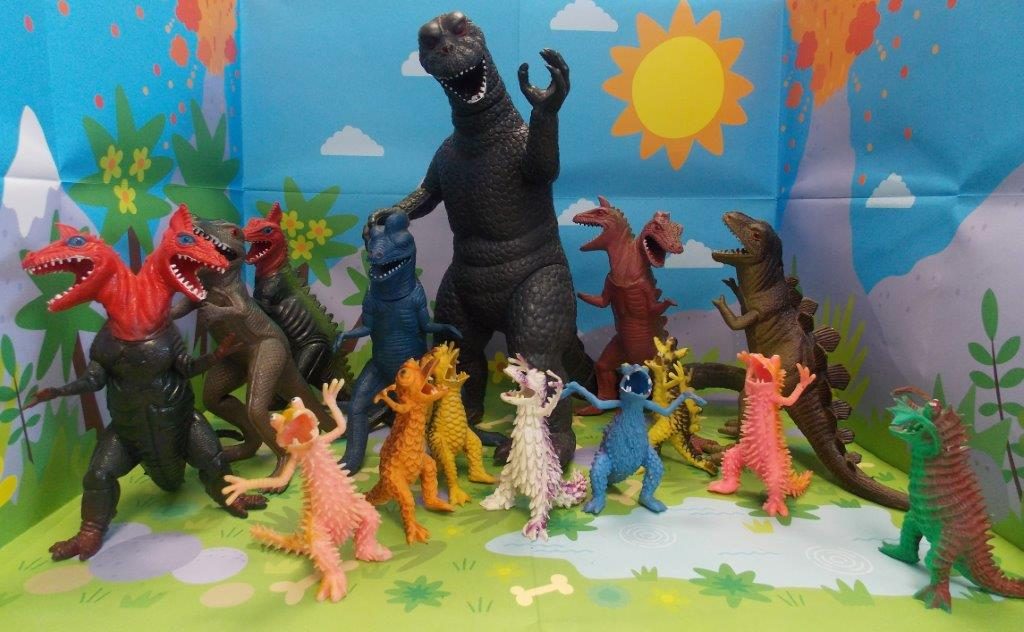
One of the more accurate models of the 1970/80s were made by Invicta in Leicester for the British Museum (Natural History) — painted versions appeared in the 1990s. The Carnegie Museum launched a set of dinosaur toys in 1988 and their T. rex has had several models since then. The original model stood upright, but ten years later a model with a more horizontal pose was produced.
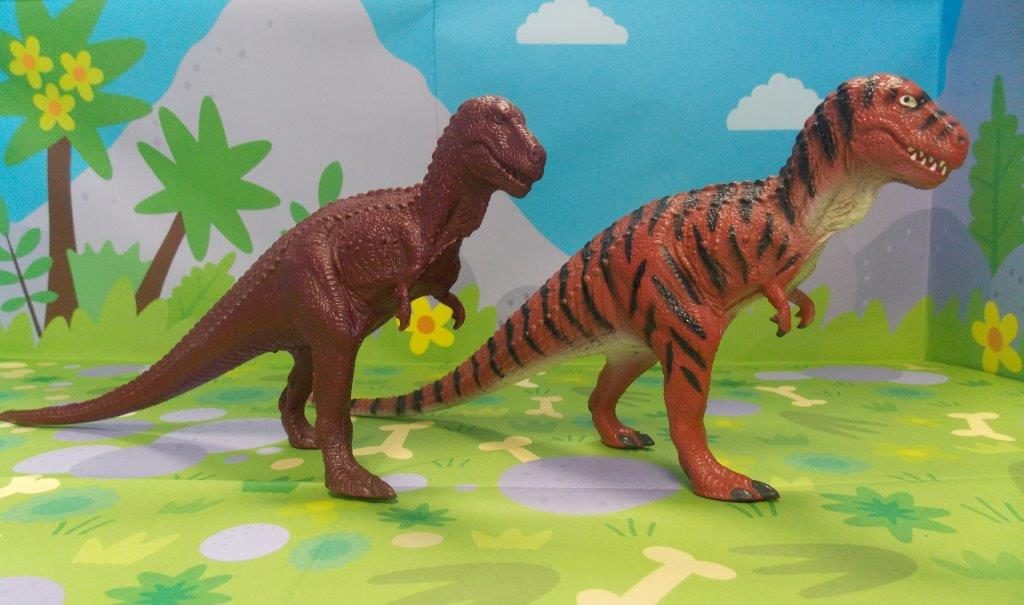
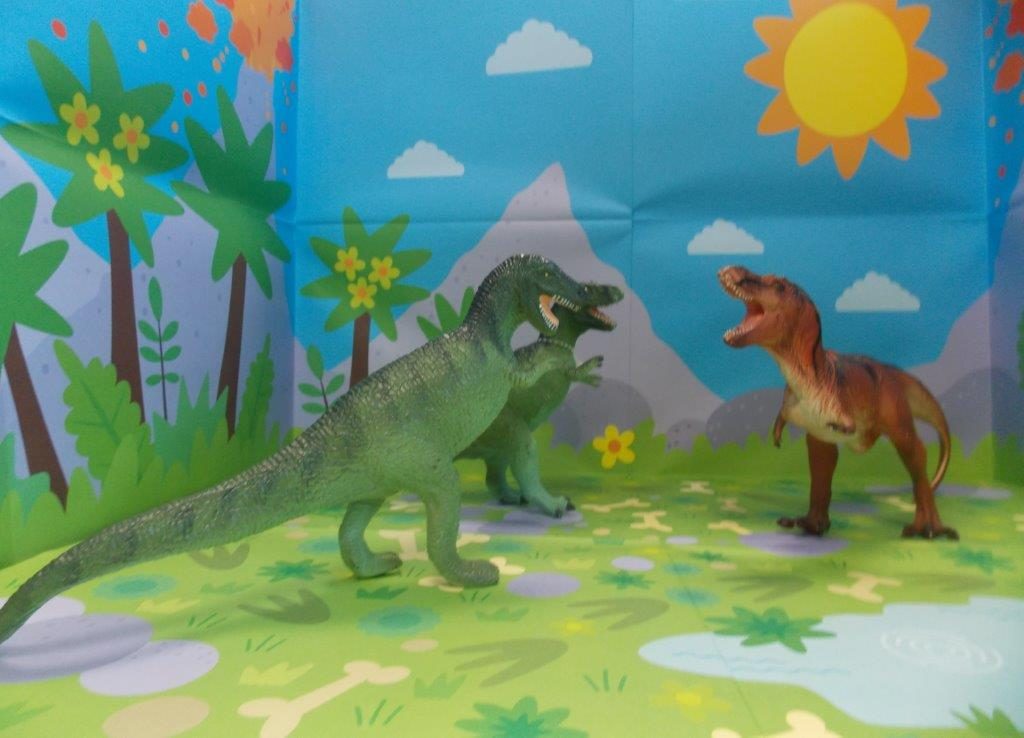
The film Jurassic Park (1993) and its subsequent sequels reignited public interest in dinosaurs. The movie franchise has produced lots of toys including this big T. rex (with roaring and stomping sounds) made by Kenner for the original movie.
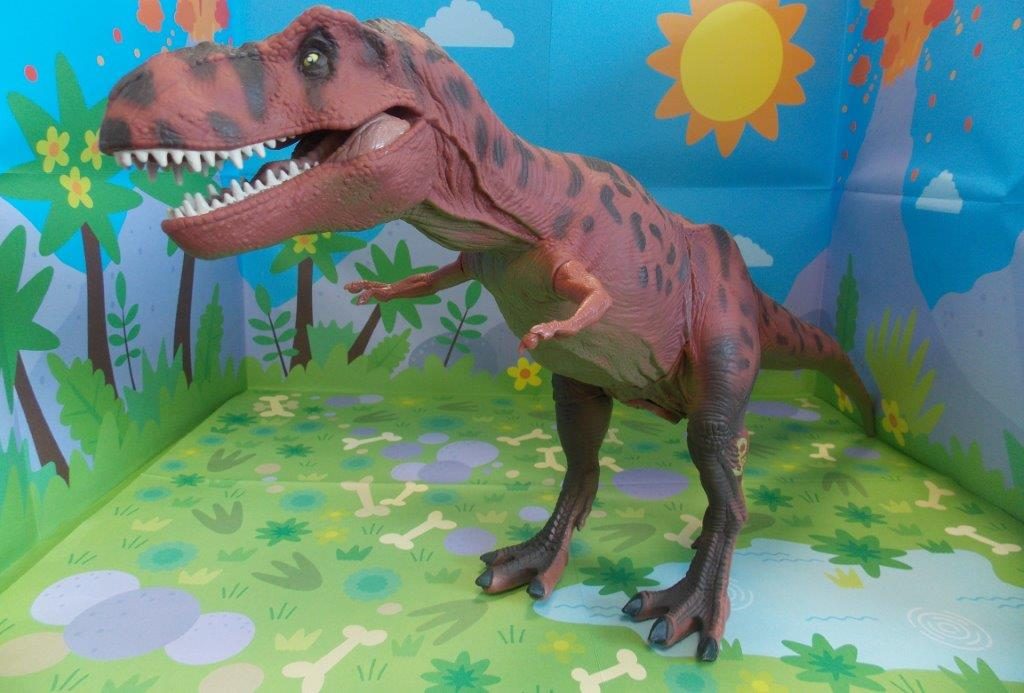
The Boston Science Museum in America commissioned a series of dinosaurs in the 1990s (made by Battat) all on the same 1:40 scale. Their T. rex is regarded as one of the best T. rex toys.
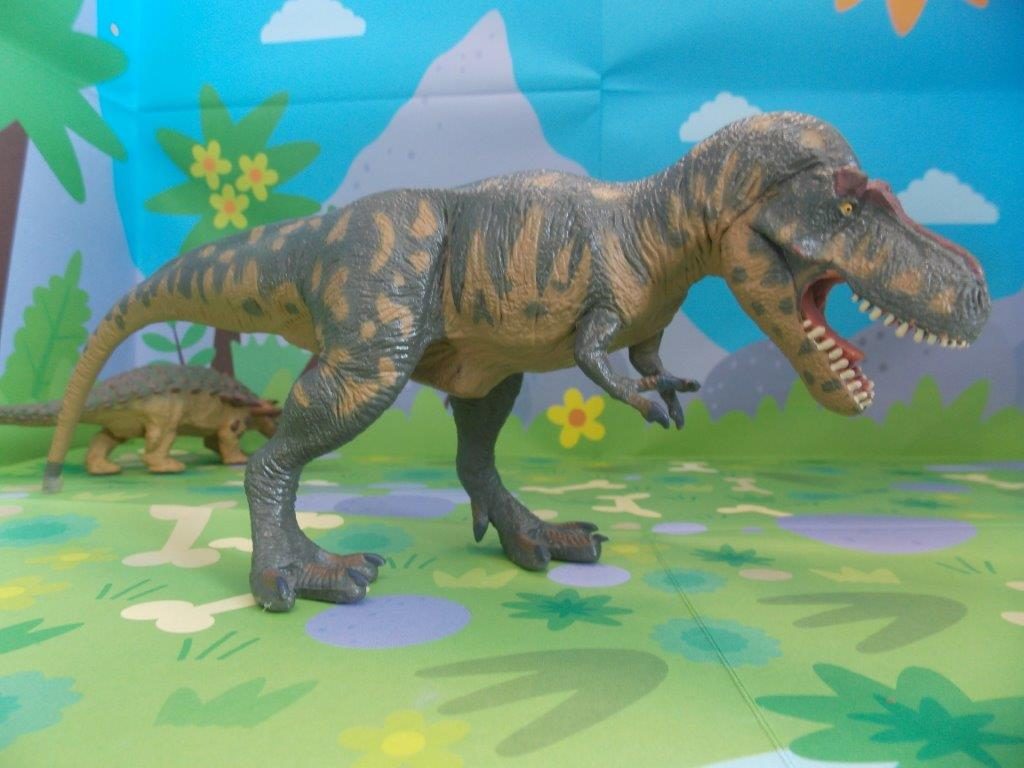
The last twenty years has seen the discovery of more and more members of the Tyrannosaur family and (yippee!) a greater diversity of toy models produced with Albertosaurus, Alioramus, Bistahieversor, Daspletosaurus Dilong, Eotyrannus, Gorgosaurus, Guanlong, Lythronax, Proceratosaurus, Quangzhosaurus, Tarbosaurus, Yutyrannus, and Xionguanlong all appearing in toy form.
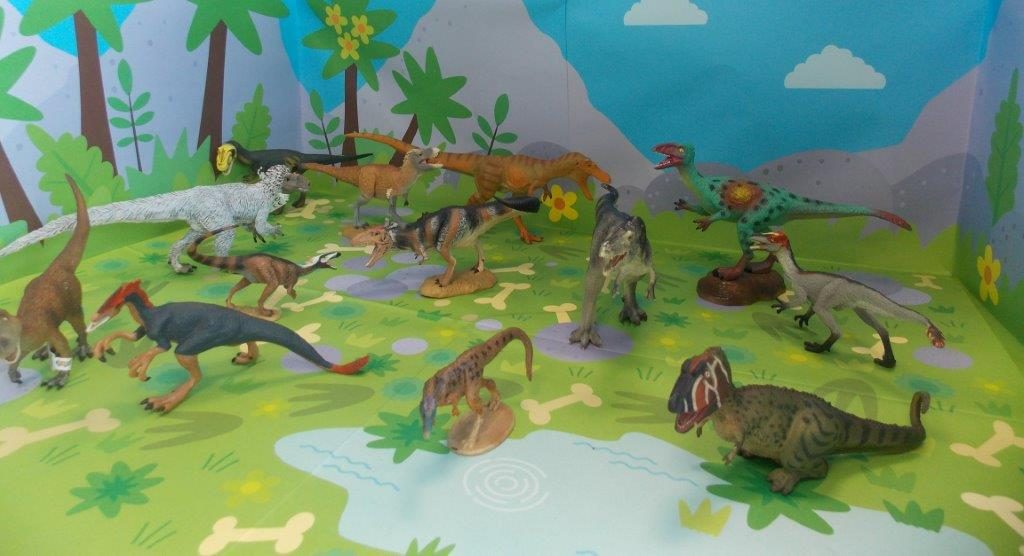
Some of the fossils of the ancestors of T. rex from China show evidence for feathers or filaments; but we don’t know for certain if T. rex or the larger tyrannosaurs had feathers.
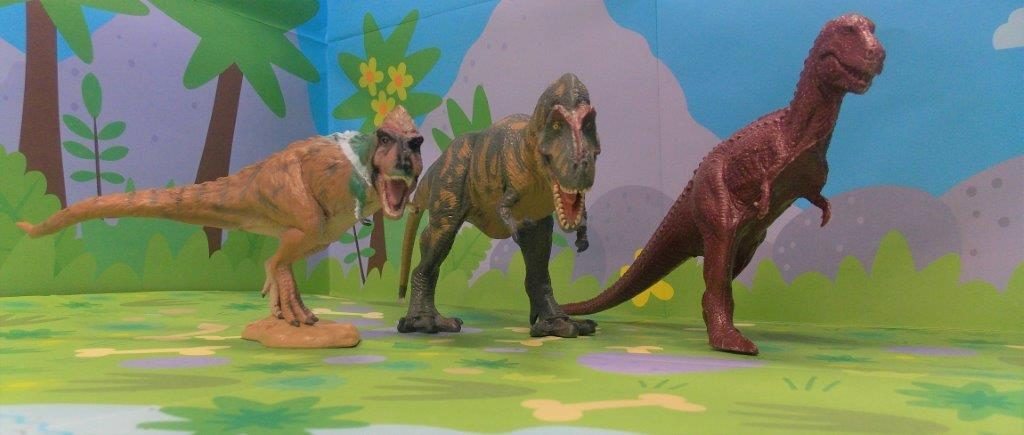
Dinosaurs are now thought of as more active colourful animals. Modern lightweight materials make casts of dinosaur skeletons much lighter, so they can now be seen in more natural, dynamic poses so — perceptions of dinosaurs as living animals have been transformed from those of previous decades.
Models of new dinosaur discoveries can reflect current scientific thinking much more quickly than before — it will be interesting to see what toy T. rex looks like in the future.
